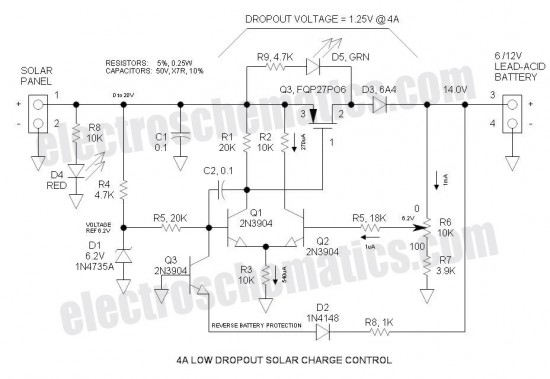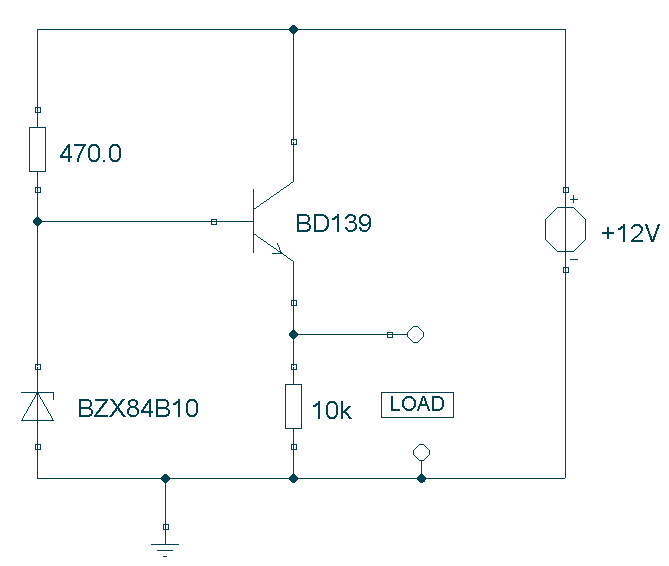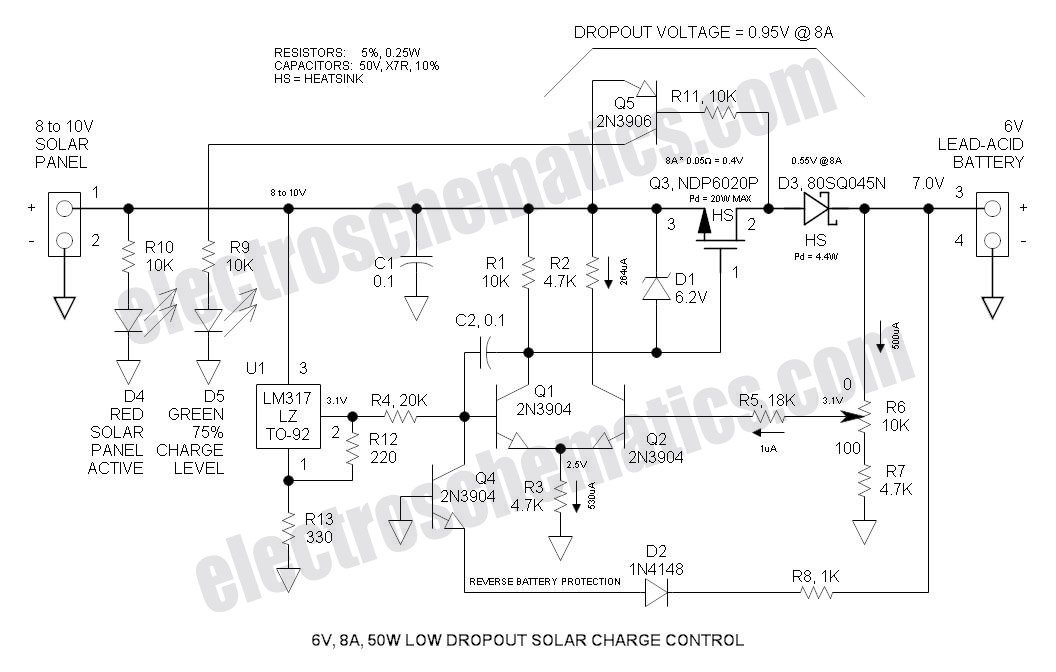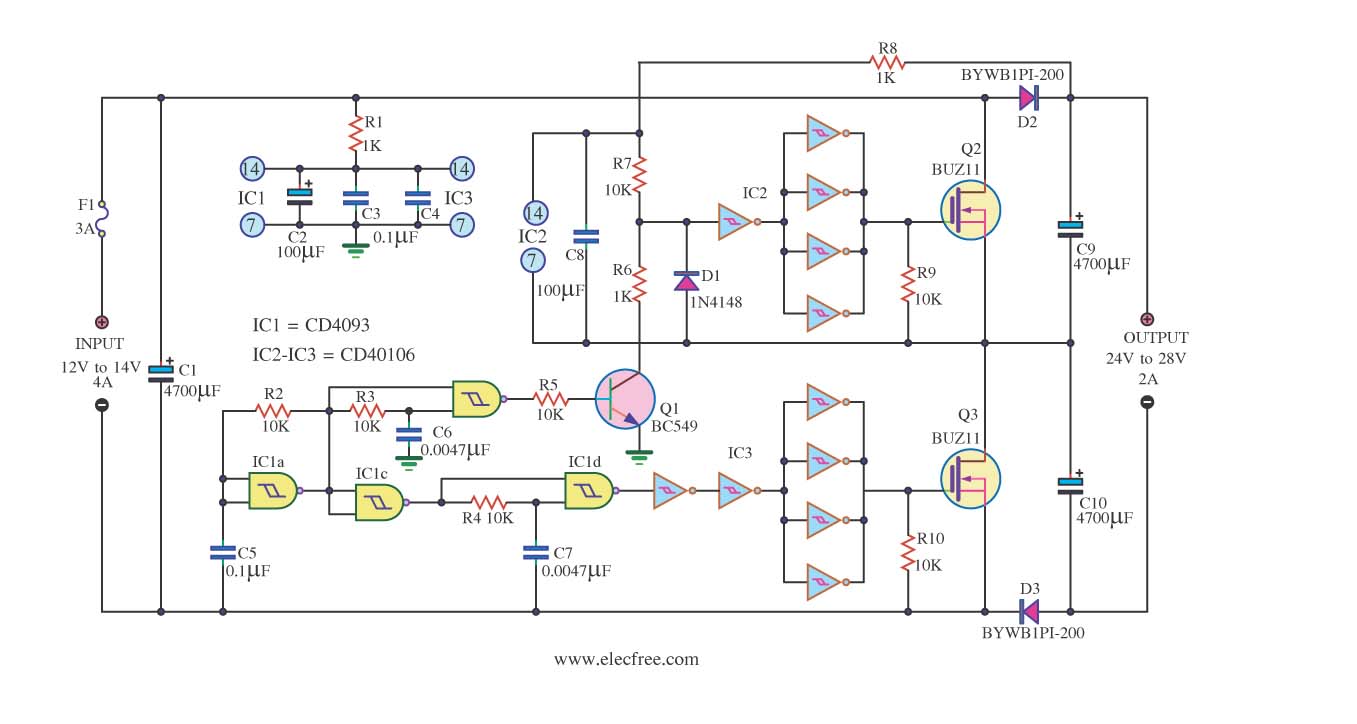
12V to 3V convertor
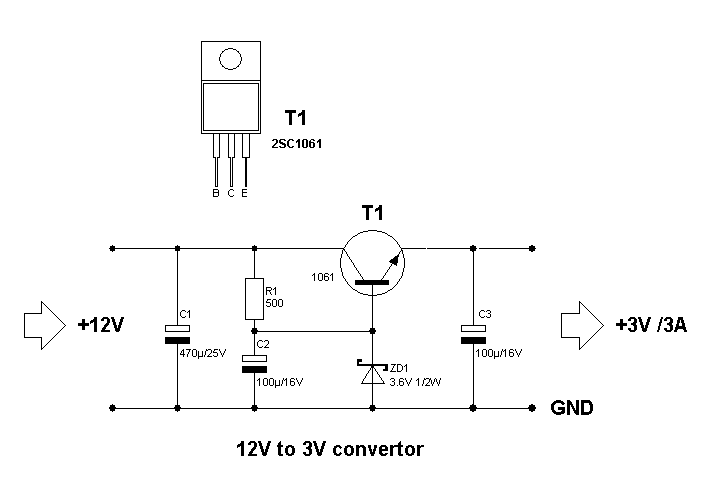
A 12V to 3V converter. This is a simple and inexpensive circuit designed to convert voltage from 12V to 3V. In fact, this is a basic regulator circuit.
This 12V to 3V converter circuit typically employs a linear voltage regulator, such as the LM317 or a similar adjustable regulator, which is capable of providing a stable output voltage by dissipating excess voltage as heat. The input voltage of 12V is fed into the regulator, where it is reduced to the desired output voltage of 3V.
The circuit consists of the following key components:
1. **Voltage Regulator**: An LM317 adjustable voltage regulator is commonly used. It has three terminals: input, output, and adjustment. The output voltage can be set by using two resistors in a voltage divider configuration, which connects to the adjustment terminal.
2. **Input Capacitor**: A capacitor (typically 0.1µF) is placed at the input of the regulator to filter out high-frequency noise from the power supply, ensuring stable operation.
3. **Output Capacitor**: A larger capacitor (usually 10µF or greater) is connected at the output to improve transient response and provide stability to the output voltage.
4. **Resistors**: Two resistors are used to set the output voltage. The values of these resistors can be calculated using the formula provided in the LM317 datasheet, which relates the output voltage to the ratio of the resistors.
5. **Heat Sink**: Since the LM317 can dissipate a significant amount of heat when dropping from 12V to 3V, a heat sink is recommended to prevent overheating and ensure reliable operation.
6. **Protection Diodes**: Including a diode across the output can protect against reverse polarity and transient voltage spikes, enhancing the circuit's robustness.
This circuit is particularly useful in applications where a low voltage is required from a higher voltage supply, such as powering sensors, microcontrollers, or other low-voltage devices. The simplicity and low cost of the components make it an ideal choice for hobbyists and in educational settings for demonstrating basic voltage regulation principles.12V to 3V convertor. This is an simple and cheap circuit to convert voltage from 12V to 3V.In fact this is a basic regulator circuit.The output voltage. 🔗 External reference
This 12V to 3V converter circuit typically employs a linear voltage regulator, such as the LM317 or a similar adjustable regulator, which is capable of providing a stable output voltage by dissipating excess voltage as heat. The input voltage of 12V is fed into the regulator, where it is reduced to the desired output voltage of 3V.
The circuit consists of the following key components:
1. **Voltage Regulator**: An LM317 adjustable voltage regulator is commonly used. It has three terminals: input, output, and adjustment. The output voltage can be set by using two resistors in a voltage divider configuration, which connects to the adjustment terminal.
2. **Input Capacitor**: A capacitor (typically 0.1µF) is placed at the input of the regulator to filter out high-frequency noise from the power supply, ensuring stable operation.
3. **Output Capacitor**: A larger capacitor (usually 10µF or greater) is connected at the output to improve transient response and provide stability to the output voltage.
4. **Resistors**: Two resistors are used to set the output voltage. The values of these resistors can be calculated using the formula provided in the LM317 datasheet, which relates the output voltage to the ratio of the resistors.
5. **Heat Sink**: Since the LM317 can dissipate a significant amount of heat when dropping from 12V to 3V, a heat sink is recommended to prevent overheating and ensure reliable operation.
6. **Protection Diodes**: Including a diode across the output can protect against reverse polarity and transient voltage spikes, enhancing the circuit's robustness.
This circuit is particularly useful in applications where a low voltage is required from a higher voltage supply, such as powering sensors, microcontrollers, or other low-voltage devices. The simplicity and low cost of the components make it an ideal choice for hobbyists and in educational settings for demonstrating basic voltage regulation principles.12V to 3V convertor. This is an simple and cheap circuit to convert voltage from 12V to 3V.In fact this is a basic regulator circuit.
